数据结构进阶——AVL树
- 0. 前言
- 1. AVL树的概念
- 2. AVL树节点,和树的定义
- 3. AVL树的插入
- 4. AVL树的旋转
- 5. AVL树的验证
- 6. AVL树的删除(了解)
- 7. AVL树实现完整代码
- 8. AVL树的性能
0. 前言
学习本章,需要大家先掌握搜索二叉树,了解键值对pair。
- 学习搜索二叉树点击此处:https://blog.csdn.net/weixin_73870552/article/details/138686066?spm=1001.2014.3001.5501
1. AVL树的概念
1. 搜索二叉树的弊端:
- 搜索二叉树虽可以缩短查找的效率,但如果数据有序或接近有序二叉搜索树将退化为单支树,查找元素相当于在顺序表中搜索元素,效率低下。因此,两位俄罗斯的数学家G.M.Adelson-Velskii和E.M.Landis在1962年发明了一种解决上述问题的方法:当向二叉搜索树中插入新结点后,如果能保证每个结点的左右子树高度之差的绝对值不超过1(需要对树中的结点进行调整),就可以降低树的高度,从而减少平均搜索长度。
2. AVL树的性质:
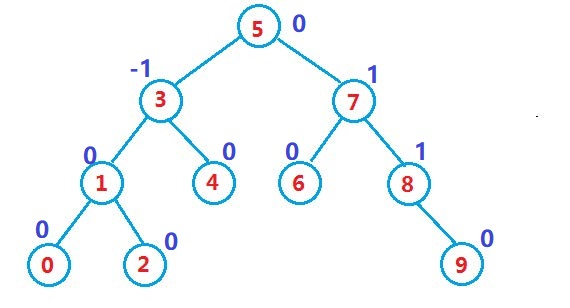
- 左右子树都是AVL树;
- 左右子树高度之差(简称平衡因子)的绝对值不超过1;
- 空树是AVL树。
如果一棵二叉搜索树是高度平衡的,它就是AVL树。如果它有n个结点,其高度可保持在 O ( l o g 2 n ) O(log_2 n) O(log2n),搜索时间复杂度 O ( l o g 2 n ) O(log_2 n) O(log2n)。
2. AVL树节点,和树的定义
1. 节点:
template<class K, class V>
struct AVLTreeNode
{AVLTreeNode<K, V>* _left;AVLTreeNode<K, V>* _right;AVLTreeNode<K, V>* _parent;pair<K, V> _kv;int _bf; // balance factor 平衡因子AVLTreeNode(const pair<K, V>& kv): _left(nullptr), _right(nullptr), _parent(nullptr), _kv(kv), _bf(0){}
};
- 该节点的定义是一个三叉链,
_left和_right分别指向左右子树,_parent指向父节点; - 节点中存储的有效数据为
pair<K, V>,类型的键值对; _bf为平衡因子,在此我们定义为右树高度减去左树高度,用来控制左右子树的高度(注意:平衡因子只是其中一种控制平衡的手段,并不是唯一的);- 定义了一个模版构造函数,以便后续使用。
2. 树:
template<class K, class V>
class AVLTree
{typedef AVLTreeNode<K, V> Node;
public:...private:Node* _root = nullptr;size_t _size = 0;
};
_size记录树中一共有多少数据(多少节点)。
3. AVL树的插入
1. 思路:
- AVL树就是在搜索二叉树的基础上引入了平衡因子,因此AVL树也可以看成是搜索二叉树。那么AVL树的插入过程可以分为两步:
- 按照二叉搜索树的方式插入新节点;
- 调整节点的平衡因子。
- 调整平衡因子的过程,又可以细分为两部分:
- 平衡因子的更新;
- 节点的调整(旋转)+ 平衡因子的更新。
1. 模拟插入过程(红色节点表示新插入节点):
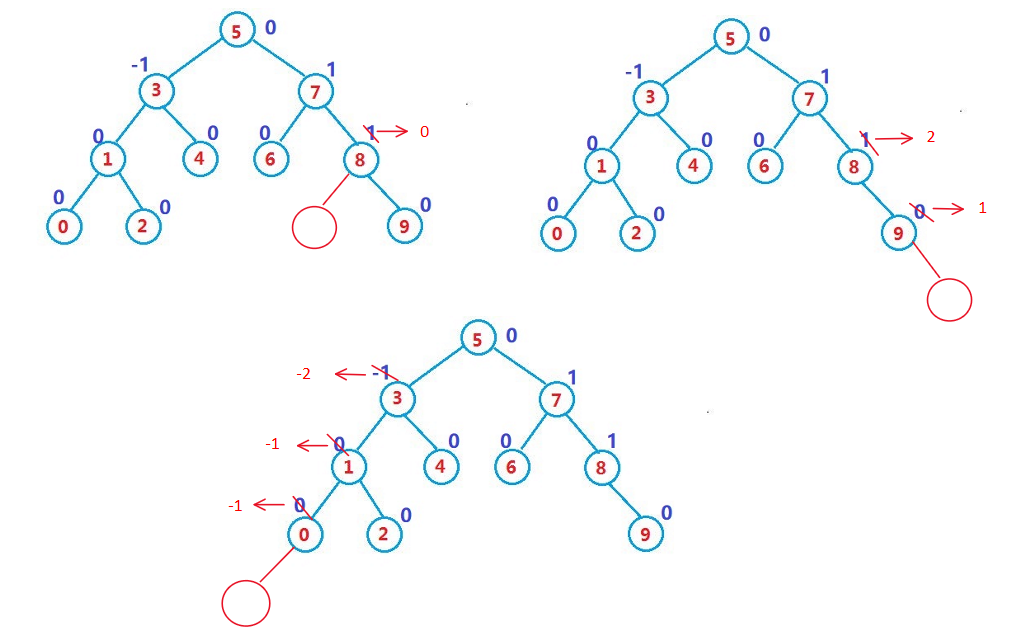
- 插入新节点后,第一件事,是更新该新节点的父亲的平衡因子:
- 新增节点在左,父亲
bf--; - 新增节点在右,父亲
bf++。
- 新增节点在左,父亲
- 更新完该新节点的父亲后,还要判断是否需要往上更新(新增节点可能会影响祖先,但是一定不会影响兄弟):
- 更新后,父亲
bf == 0,父亲所在的子树高度不变,不用再继续往上更新了,插入结束。 (ps:在插入节点前,父亲bf == 1 or -1,子树一边高,一边低,新插入节点填补低的那边) - 更新后,父亲
bf == 1 or -1,父亲所在的子树高度变了,需要继续往上更新。(ps:在插入节点前,父亲bf == 0,两边一样高,插入新节点导致高度变化) - 更新后,父亲
bf == 2 or -2,父亲所在的子树不平衡,需要旋转调整。
- 更新后,父亲
template<class K, class V>
class AVLTree
{typedef AVLTreeNode<K, V> Node;
public:bool Insert(const pair<K, V>& kv){// 插入,类比搜索二叉树插入if (_root == nullptr){_root = new Node(kv);_size++;return true;}// 通过parent向上找父节点Node* parent = nullptr;Node* cur = _root;while (cur){if (kv.first > cur->_kv.first){parent = cur;cur = cur->_right;}else if (kv.first < cur->_kv.first){parent = cur;cur = cur->_left;}else{return false;}}cur = new Node(kv);if (kv.first > parent->_kv.first){parent->_right = cur;cur->_parent = parent;}else{parent->_left = cur;cur->_parent = parent;}_size++;// 调整,AVL树的核心部分while (parent){// 平衡因子的更新if (cur == parent->_left){// 插入在左节点,_bf--parent->_bf--;}else{// 插入在右节点,_bf++parent->_bf++;}// 判断是否要继续向上更新,和是否旋转调整if (parent->_bf == 0){// 更新后 _bf == 0,说明子树高度不变,不需要往上更新break;}else if (parent->_bf == 1 || parent->_bf == -1){// 更新后子树高度改变,需要往上更新cur = parent;parent = parent->_parent;}else if (parent->_bf == 2 || parent->_bf == -2){// 旋转调整...}else{// 平衡因子绝对值大于2,直接报错assert(false);}}return true;}...private:Node* _root = nullptr;size_t _size = 0;
};
4. AVL树的旋转
- 如果在一棵原本是平衡的AVL树中插入一个新节点,可能造成不平衡,此时必须调整树的结构,使之平衡化。根据节点插入位置的不同,AVL树的旋转分为四种:
1. 新节点插入较高左子树的左侧—右右:左单旋
-
先考虑一种最简单的场景(场景1):
- 直接将8节点链接到9节点的左边即可。
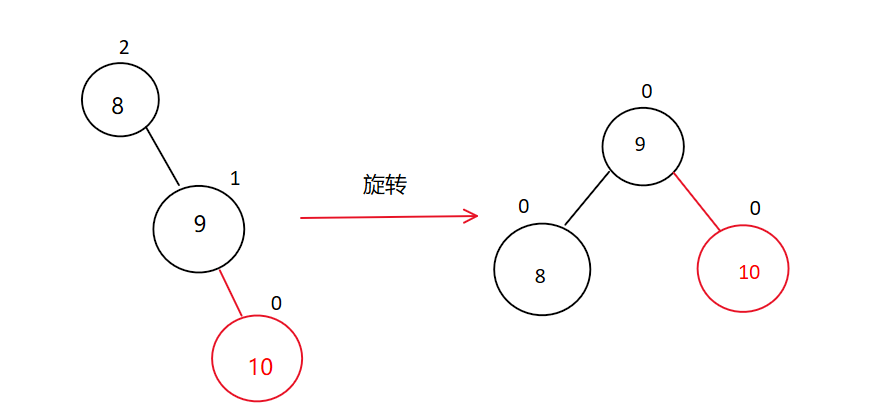
- 直接将8节点链接到9节点的左边即可。
-
再看一种更复杂的场景(场景2):
- 需要将13节点链接到9节点的右子树,将9节点链接到15节点的左子树。

- 需要将13节点链接到9节点的右子树,将9节点链接到15节点的左子树。
-
还有更加复杂的情况,但是我们可以对所有的情况进行一个归类,画出抽象图:
- a,b,c 都是高度为h的AVL平衡树;
- 只需要将b框中的节点(subRL),链接到30节点(parent)的右子树(将60节点的左子树链接到30节点的右边);再将30节点(parent),连接到60节点(subR)的左子树即可。(别忘了是三叉链,要同步更新父节点)
- 旋转完后别忘了更新平衡因子,左单旋后,
parent和subR节点的_bf都为0,其余节点的平衡因子均不会受到印象。 h = 0时,就对应场景1的情况;h = 1时,就对应场景2的情况。

- 代码实现:
- 注意,在更新
subRL节点的父节点时,需要先判断subRL是否为空(h=0的情况),如果为空,就不要访问subRL了; - 还需要记录
parent的父节点,方便旋转后将subR链接给parent->_parent,和整棵树链接起来; - 当
parent就是根节点时,需要特殊处理,要更新根节点为subR。
- 注意,在更新
template<class K, class V>
class AVLTree
{typedef AVLTreeNode<K, V> Node;
public:// 左单旋void RotateL(Node* parent){Node* subR = parent->_right;Node* subRL = subR->_left;// 更新左右节点parent->_right = subRL;subR->_left = parent;// 提前记录parent的parentNode* parentParent = parent->_parent;// 更新_parentparent->_parent = subR;if (subRL) // 判断为不为空,subRL是唯一一个可能为空的节点{subRL->_parent = parent;}// 处理根if (_root == parent){_root = subR;subR->_parent = nullptr;}else if (parentParent->_left == parent){parentParent->_left = subR;subR->_parent = parentParent;}else{parentParent->_right = subR;subR->_parent = parentParent;}// 更新平衡因子parent->_bf = subR->_bf = 0;}...private:Node* _root = nullptr;size_t _size = 0;
};
2. 新节点插入较高左子树的左侧—左左:右单旋
- 这里不带着大家一步一步分析了,直接上抽象图:
- a,b,c 均为高度为h的AVL平衡树;
- 只需要将
subLR给parent的左,再将parent给subL的右即可; - 随后更新平衡因子,
subL和parent的_bf都更新为0。

- 类比左单旋,直接上代码:
template<class K, class V>
class AVLTree
{typedef AVLTreeNode<K, V> Node;
public:// 右单旋void RotateR(Node* parent){Node* subL = parent->_left;Node* subLR = subL->_right;// 更新左右节点subL->_right = parent;parent->_left = subLR;Node* parentParent = parent->_parent;// 更新_parentparent->_parent = subL;if (subLR){subLR->_parent = parent;}if (_root == parent){_root = subL;subL->_parent = nullptr;}else if (parentParent->_left == parent){parentParent->_left = subL;subL->_parent = parentParent;}else{parentParent->_right = subL;subL->_parent = parentParent;}parent->_bf = subL->_bf = 0;}...private:Node* _root = nullptr;size_t _size = 0;
};
3. 新节点插入较高左子树的右侧—左右:先左单旋再右单旋(左右双旋)
-
注意:该抽象图只是左右双旋中的一种情况,为在60的左子树新增。还有两种情况没有画出来,分别是(1)60作为新增节点的情况;(2)在60的右子树新增的情况。不同的情况,旋转后得到的平衡因子有差别。
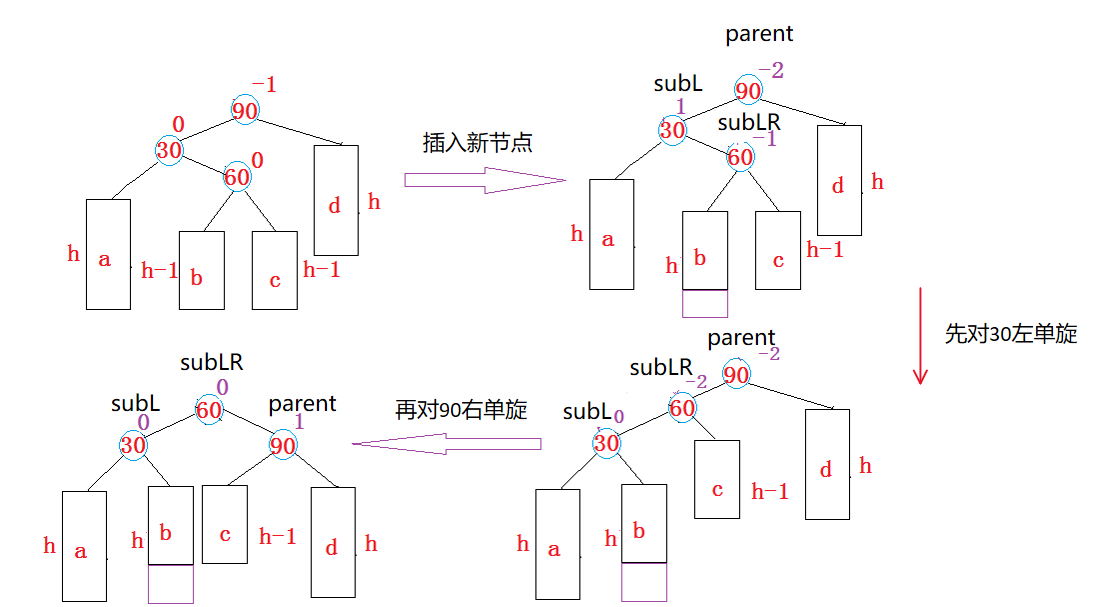
-
h = 0的情况:60就是新插入节点。此时b,c子树不存在,注意是不存在,连空都不是。此时,parent,subL,subLR的平衡因子均为0。

-
h = 1的情况(该情况又分两种):- 在60的左子树新增:注意此时
subL和subLR的平衡因子均为0,只有parent的平衡因子为1,和h = 0的情况不一样。
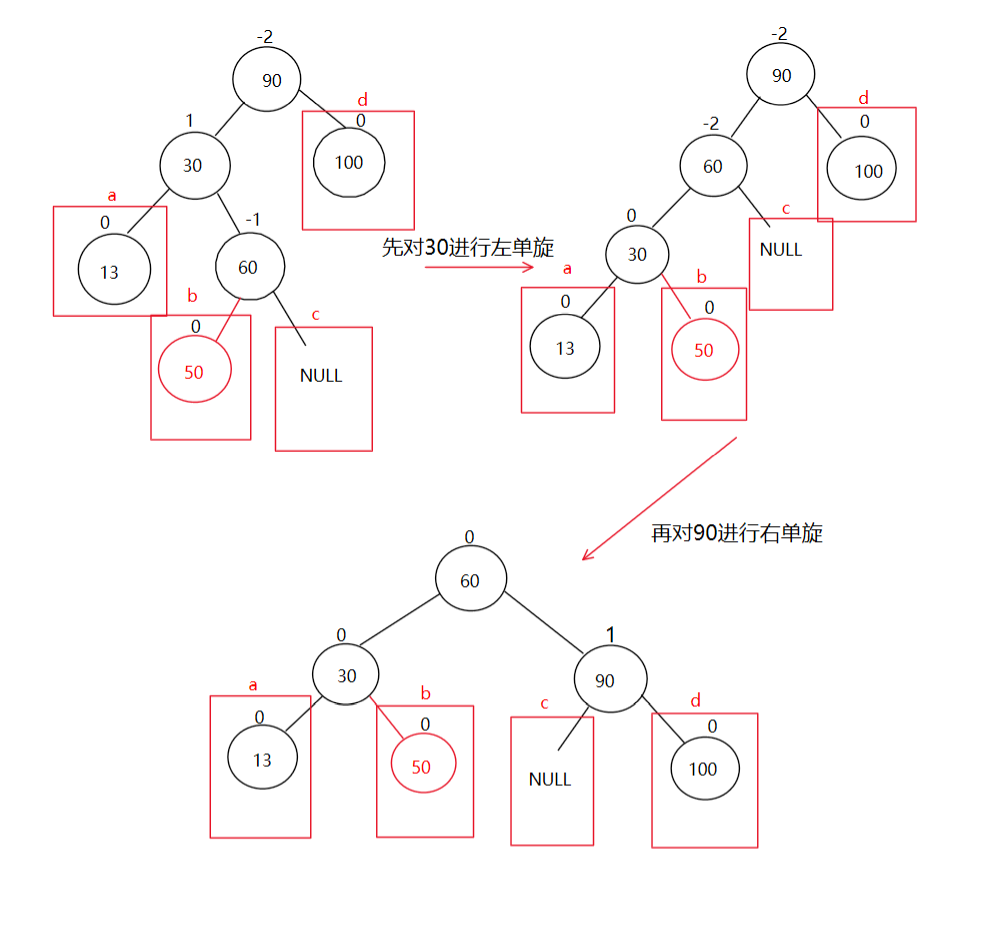
- 在60的右子树新增:这种情况最后的到的子树,和上图只有一处区别,就是
b变成了NULL,c变成了50,故此时subL的平衡因子为-1,parent,subLR的平衡因子均为0。和在60左子树新增的情况,平衡因子又不一样。
- 在60的左子树新增:注意此时
-
代码实现:
- 我们可以根据新节点插入后,
subLR的平衡因子来确定到底是上述哪种情况。(1)subLR->_bf == 0,说明subLR就是新增节点;(2)subLR->_bf == -1,说明是在subLR的左子树新增;(3)subLR->_bf == 1,说明是在subLR的右子树新增。
- 我们可以根据新节点插入后,
template<class K, class V>
class AVLTree
{typedef AVLTreeNode<K, V> Node;
public:// 左右双旋void RotateLR(Node* parent){Node* subL = parent->_left;Node* subLR = subL->_right;int bf = subLR->_bf; // 提前记录subLR的平衡因子,避免单旋操作后,值丢失// 先左旋再右旋RotateL(parent->_left);RotateR(parent);// 更新平衡因子if (bf == 0){// subLR自己就是新增节点subL->_bf = subLR->_bf = parent->_bf = 0;}else if (bf == -1){// subLR的左子树新增parent->_bf = 1;subL->_bf = subLR->_bf = 0;}else if (bf == 1){// subLR的右子树新增parent->_bf = subLR->_bf = 0;subL->_bf = -1;}else{assert(false); // 检查点}}...private:Node* _root = nullptr;size_t _size = 0;
};
4. 新节点插入较高右子树的左侧—右左:先右单旋再左单旋(右左双旋)
- 注意:该抽象图只是右左双旋中的一种情况,为在60的右子树新增。还有两种情况没有表示出来,分别是(1)60就是新增节点;(2)在60的左子树新增。

- 类比左右双旋,上代码:
- 还是要注意,可以通过
subRL的平衡因子区分上述三种情况。(1)subRL->_bf == 0,说明subRL就是新增节点;(2)subRL->_bf == 1,说明是在subRL的右子树新增,parent->_bf == -1;(3)subRL->_bf == -1,说明是在subRL的左子树新增,subR->_bf == 1。
- 还是要注意,可以通过
template<class K, class V>
class AVLTree
{typedef AVLTreeNode<K, V> Node;
public:// 右左双旋void RotateRL(Node* parent){Node* subR = parent->_right;Node* subRL = subR->_left;int bf = subRL->_bf; // 提前记录subRL的平衡因子,避免单旋操作后,值丢失// 先右旋再左旋RotateR(parent->_right);RotateL(parent);// 更新平衡因子if (bf == 0){// subRL自己就是新增节点parent->_bf = subR->_bf = subRL->_bf = 0;}else if (bf == -1){// subRL的左子树新增parent->_bf = 0;subR->_bf = 1;subRL->_bf = 0;}else if(bf == 1){// subRL的右子树新增parent->_bf = -1;subR->_bf = 0;subRL->_bf = 0;}else{assert(false); // 检查点}}...private:Node* _root = nullptr;size_t _size = 0;
};
5. 完善插入:
- 旋转完成后是不需要继续向上更新平衡因子的,因为(1)旋转让这棵树平衡了;(2)旋转降低了这棵子树的高度,恢复到更插入前一样的高度,所以对上一层没有影响,不用更新。
template<class K, class V>
class AVLTree
{typedef AVLTreeNode<K, V> Node;
public:bool Insert(const pair<K, V>& kv){// 插入,类比搜索二叉树插入if (_root == nullptr){_root = new Node(kv);_size++;return true;}Node* parent = nullptr;Node* cur = _root;while (cur){if (kv.first > cur->_kv.first){parent = cur;cur = cur->_right;}else if (kv.first < cur->_kv.first){parent = cur;cur = cur->_left;}else{return false;}}cur = new Node(kv);if (kv.first > parent->_kv.first){parent->_right = cur;cur->_parent = parent;}else{parent->_left = cur;cur->_parent = parent;}_size++;// 调整,AVL树的核心部分while (parent){// 平衡因子的更新if (cur == parent->_left){// 插入在左节点,_bf--parent->_bf--;}else{// 插入在右节点,_bf++parent->_bf++;}// 判断是否要继续向上更新,和是否旋转调整if (parent->_bf == 0){// 更新后 _bf == 0,说明子树高度不变,不需要往上更新break;}else if (parent->_bf == 1 || parent->_bf == -1){// 更新后子树高度改变,需要往上更新cur = parent;parent = parent->_parent;}else if (parent->_bf == 2 || parent->_bf == -2){// 平衡因子绝对值等于2,旋转调整if (parent->_bf == 2 && cur->_bf == 1){// 左单旋调整RotateL(parent);}else if (parent->_bf == -2 && cur->_bf == -1){// 右单旋调整RotateR(parent);}else if (parent->_bf == 2 && cur->_bf == -1){// 先右边高,再左边高,右左双旋RotateRL(parent);}else if (parent->_bf == -2 && cur->_bf == 1){// 先左边高,再右边高,左右双旋RotateLR(parent);}else{assert(false);}// 完成旋转后,不需要再往上更新平衡因子了,直接break// 1、旋转让这棵树平衡了// 2、旋转降低了这棵子树的高度,恢复到更插入前一样的高度,所以对上一层没有影响,不用更新break;}else{// 平衡因子绝对值大于2,直接报错assert(false);}}return true;}...private:Node* _root = nullptr;size_t _size = 0;
};
5. AVL树的验证
1. 验证其为二叉搜索树:
- 如果中序遍历可得到一个有序的序列,就说明为二叉搜索树。
2. 验证其为平衡树:
- 每个节点子树高度差的绝对值不超过1;
- 节点的平衡因子是否计算正确。
3. 相关函数实现:
template<class K, class V>
class AVLTree
{typedef AVLTreeNode<K, V> Node;
public:void _InOrder(Node* root){if (root == nullptr)return;_InOrder(root->_left);cout << root->_kv.first << " ";_InOrder(root->_right);}void InOrder(){_InOrder(_root);cout << endl;}int _Height(Node* root){if (root == nullptr)return 0;int leftHeight = _Height(root->_left);int rightHeight = _Height(root->_right);return leftHeight > rightHeight ? leftHeight + 1 : rightHeight + 1;}int Height(){return _Height(_root);}bool IsBalance(){return _IsBalance(_root);}bool _IsBalance(Node* root){if (root == nullptr)return true;int leftHeight = _Height(root->_left);int rightHeight = _Height(root->_right);if (rightHeight - leftHeight != root->_bf){cout << root->_kv.first << "平衡因子异常" << endl;return false;}return abs(rightHeight - leftHeight) < 2&& _IsBalance(root->_left)&& _IsBalance(root->_right);}size_t Size() const {return _size;}...private:Node* _root = nullptr;size_t _size = 0;
};
4. 测试代码:
void Test()
{const int N = 100;srand(time(0));vector<int> v;for (int i = 0; i < N; i++){v.push_back(rand());}AVLTree<int, int> tree;for (auto e : v){tree.Insert(make_pair(e, e));}tree.InOrder(); // 检查是否有序cout << tree.IsBalance() << endl; // 检查是否平衡cout << tree.Height() << endl; // 看看高度cout << tree.Size() << endl; // 看看数据量
}
6. AVL树的删除(了解)
1. 思路:
- 因为AVL树也是二叉搜索树,可按照二叉搜索树的方式将节点删除,然后再更新平衡因子。只不过,平衡因子更新最差情况下要一直调整到根节点的位置。
2. 例:
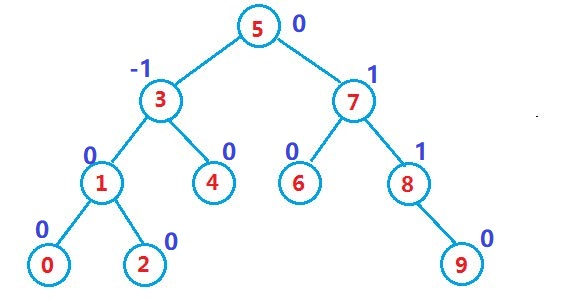
- 假如我们要删除根节点,可以先在右子树找到替换节点6,进行替换删除,然后更新平衡因子,得到的树如下图所示:
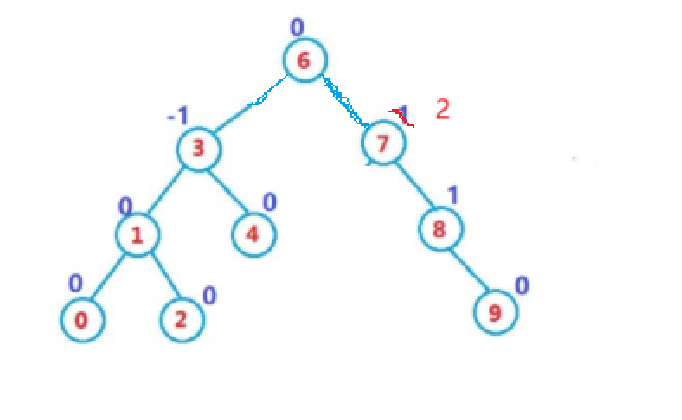
- 更新7这个节点的平衡因子,更新为2,不用继续向上更新了,对7节点进行左单旋调整即可。
删除的代码不再写了,面试时也几乎不会考察,最多考察思路。
7. AVL树实现完整代码
#pragma once#include<iostream>
#include<assert.h>using namespace std;template<class K, class V>
struct AVLTreeNode
{AVLTreeNode<K, V>* _left;AVLTreeNode<K, V>* _right;AVLTreeNode<K, V>* _parent;pair<K, V> _kv;int _bf; // balance factor 平衡因子AVLTreeNode(const pair<K, V>& kv): _left(nullptr), _right(nullptr), _parent(nullptr), _kv(kv), _bf(0){}
};template<class K, class V>
class AVLTree
{typedef AVLTreeNode<K, V> Node;
public:bool Insert(const pair<K, V>& kv){// 插入,类比搜索二叉树插入if (_root == nullptr){_root = new Node(kv);_size++;return true;}Node* parent = nullptr;Node* cur = _root;while (cur){if (kv.first > cur->_kv.first){parent = cur;cur = cur->_right;}else if (kv.first < cur->_kv.first){parent = cur;cur = cur->_left;}else{return false;}}cur = new Node(kv);if (kv.first > parent->_kv.first){parent->_right = cur;cur->_parent = parent;}else{parent->_left = cur;cur->_parent = parent;}_size++;// 调整,AVL树的核心部分while (parent){// 平衡因子的更新if (cur == parent->_left){// 插入在左节点,_bf--parent->_bf--;}else{// 插入在右节点,_bf++parent->_bf++;}// 判断是否要继续向上更新,和是否旋转调整if (parent->_bf == 0){// 更新后 _bf == 0,说明子树高度不变,不需要往上更新break;}else if (parent->_bf == 1 || parent->_bf == -1){// 更新后子树高度改变,需要往上更新cur = parent;parent = parent->_parent;}else if (parent->_bf == 2 || parent->_bf == -2){// 平衡因子绝对值等于2,旋转调整if (parent->_bf == 2 && cur->_bf == 1){// 左单旋调整RotateL(parent);}else if (parent->_bf == -2 && cur->_bf == -1){// 右单旋调整RotateR(parent);}else if (parent->_bf == 2 && cur->_bf == -1){// 先右边高,再左边高,右左双旋RotateRL(parent);}else if (parent->_bf == -2 && cur->_bf == 1){// 先左边高,再右边高,左右双旋RotateLR(parent);}else{assert(false);}// 完成旋转后,不需要再往上更新平衡因子了,直接break// 1、旋转让这棵树平衡了// 2、旋转降低了这棵子树的高度,恢复到更插入前一样的高度,所以对上一层没有影响,不用更新break;}else{// 平衡因子绝对值大于2,直接报错assert(false);}}return true;}// 左单旋void RotateL(Node* parent){Node* subR = parent->_right;Node* subRL = subR->_left;// 更新左右节点parent->_right = subRL;subR->_left = parent;// 提前记录parent的parentNode* parentParent = parent->_parent;// 更新_parentparent->_parent = subR;if (subRL) // 判断为不为空,subRL是唯一一个可能为空的节点{subRL->_parent = parent;}// 处理根if (_root == parent){_root = subR;subR->_parent = nullptr;}else if (parentParent->_left == parent){parentParent->_left = subR;subR->_parent = parentParent;}else{parentParent->_right = subR;subR->_parent = parentParent;}// 更新平衡因子parent->_bf = subR->_bf = 0;}// 右单旋void RotateR(Node* parent){Node* subL = parent->_left;Node* subLR = subL->_right;// 更新左右节点subL->_right = parent;parent->_left = subLR;Node* parentParent = parent->_parent;// 更新_parentparent->_parent = subL;if (subLR){subLR->_parent = parent;}if (_root == parent){_root = subL;subL->_parent = nullptr;}else if (parentParent->_left == parent){parentParent->_left = subL;subL->_parent = parentParent;}else{parentParent->_right = subL;subL->_parent = parentParent;}parent->_bf = subL->_bf = 0;}// 右左双旋void RotateRL(Node* parent){Node* subR = parent->_right;Node* subRL = subR->_left;int bf = subRL->_bf; // 提前记录subRL的平衡因子,避免单旋操作后,值丢失// 先右旋再左旋RotateR(parent->_right);RotateL(parent);// 更新平衡因子if (bf == 0){// subRL自己就是新增节点parent->_bf = subR->_bf = subRL->_bf = 0;}else if (bf == -1){// subRL的左子树新增parent->_bf = 0;subR->_bf = 1;subRL->_bf = 0;}else if(bf == 1){// subRL的右子树新增parent->_bf = -1;subR->_bf = 0;subRL->_bf = 0;}else{assert(false); // 检查点}}// 左右双旋void RotateLR(Node* parent){Node* subL = parent->_left;Node* subLR = subL->_right;int bf = subLR->_bf; // 提前记录subLR的平衡因子,避免单旋操作后,值丢失// 先左旋再右旋RotateL(parent->_left);RotateR(parent);// 更新平衡因子if (bf == 0){// subLR自己就是新增节点subL->_bf = subLR->_bf = parent->_bf = 0;}else if (bf == -1){// subLR的左子树新增parent->_bf = 1;subL->_bf = subLR->_bf = 0;}else if (bf == 1){// subLR的右子树新增parent->_bf = subLR->_bf = 0;subL->_bf = -1;}else{assert(false); // 检查点}}Node* Find(const K& key){Node* cur = _root;while (cur){if (cur->_kv.first < key){cur = cur->_right;}else if (cur->_kv.first > key){cur = cur->_left;}else{return cur;}}return nullptr;}void _InOrder(Node* root){if (root == nullptr)return;_InOrder(root->_left);cout << root->_kv.first << " ";_InOrder(root->_right);}void InOrder(){_InOrder(_root);cout << endl;}int _Height(Node* root){if (root == nullptr)return 0;int leftHeight = _Height(root->_left);int rightHeight = _Height(root->_right);return leftHeight > rightHeight ? leftHeight + 1 : rightHeight + 1;}int Height(){return _Height(_root);}bool IsBalance(){return _IsBalance(_root);}bool _IsBalance(Node* root){if (root == nullptr)return true;int leftHeight = _Height(root->_left);int rightHeight = _Height(root->_right);if (rightHeight - leftHeight != root->_bf){cout << root->_kv.first << "平衡因子异常" << endl;return false;}return abs(rightHeight - leftHeight) < 2&& _IsBalance(root->_left)&& _IsBalance(root->_right);}size_t Size() const {return _size;}private:Node* _root = nullptr;size_t _size = 0;
};
8. AVL树的性能
AVL树是一棵绝对平衡的二叉搜索树,其要求每个节点的左右子树高度差的绝对值都不超过1,这样可以保证查询时高效的时间复杂度,即 l o g 2 ( N ) log_2 (N) log2(N)。但是如果要对AVL树做一些结构修改的操作,性能非常低下,比如:
- 插入时要维护其绝对平衡,旋转的次数比较多,更差的是在删除时,有可能一直要让旋转持续到根的位置。
因此:如果需要一种查询高效且有序的数据结构,而且数据的个数为静态的(即不会改变),可以考虑AVL树。但是一个经常修改的结构,就不太适合用AVL树。
